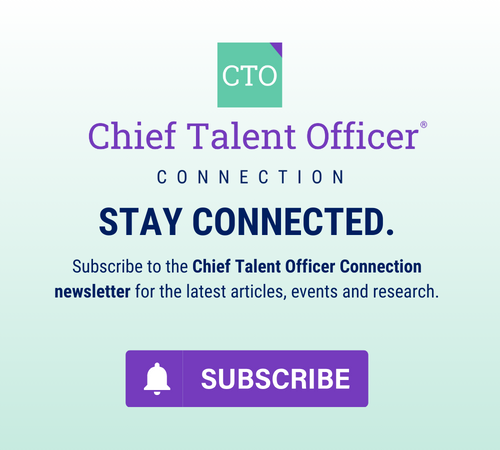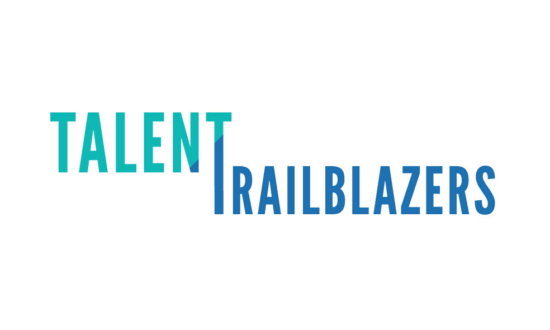While performance management has traditionally taken a human-centric approach, the continuous advancements in technology are reshaping this landscape. Aisling Teillard, chief customer officer at beqom, discusses how to leverage AI while maintaining the human element in performance management conversations.
Q. What are the key considerations for talent leaders when leveraging AI in performance management?
Teillard: We must take the best of AI and help us make performance management a more efficient experience for the managers. For example, it can be used to aggregate data quickly, to look at all the feedback that’s come in relating to somebody and to consolidate that for a manager, making it efficient for the manager, and also to support managers in making really great goals. But at the same time, we must balance that out with making sure that we don’t take the humanity out of performance management, and that it’s still about those honest conversations that can be meaningful that happen between a manager and employee in that environment. So, I think there’s a balance to be struck between getting the best of AI, but not letting it take over the good stuff, either.
Q. How should talent leaders balance AI with traditional human-centric performance management?
Teillard: The one challenge of AI is the biases that live within it. We’ve got to make sure that when we’re using AI, that we are completely confident that it’s not bringing greater bias to the conversations. And there’s been some interesting studies, like Textio did a good study on this where they saw that AI was sort of adding to the bias of the language being used. For example, women were seven times more likely to be called opinionated and 11 times more likely to be called abrasive. We see these kinds of challenges that AI sometimes will stereotype roles, you know, you talk about the receptionist, and it assumes it’s a woman and all these kinds of things that can eliminate the goods that it can bring. The humanity of performance management is key in the relationships that people build when they’re honest with each other. And I am talking about both employees, bringing their honest reflections on how the quarter has gone, how they can remove the barriers to performance, etc. Those conversations are significant, and not just for accelerating the entire business, but it’s important to bed down trust between a manager and employee.
The key is that AI is going to be there to give us efficiency. If you’re rolling out goals on scale, or don’t know how to do a development goal, AI is brilliant to come up with great development goals. We have it in our own solution. And I’m always amazed at how great it can be. But we can’t let it be the piece that is there to develop trust between manager and employee, because AI can’t do that. And AI can’t determine the potential of somebody. Performance is great for deciphering not just how high the performance was in an individual, but what kind of potential they have for the future. AI can only aggregate data on the past, what’s happened already. It can’t extrapolate out and go say, “this is one of your future leaders of the organization, or this person brings so much momentum and creativity into the office that levels everybody around them.” They’re just one of those gregarious figures that brings great morale to the office. AI can’t interpret that about you. It can’t look at the potential of who you can be in the organization in the future. And, for that reason, it’s important to balance the role of AI in bringing great efficiency and support to performance, but not eliminating the things that are uniquely human in the process.
Q. In what ways can AI technology improve employee performance management?
Teillard: Performance management has a long way to go, and AI can be a huge help. Only a quarter of companies are saying they have effective performance management systems, and three quarters of employees are struggling to think about performance to pay, so AI can be a great help on this front. Generative AI can record and summarize performance data in real time. It can also remove some of the recency bias and the unconscious biases that can occur by giving a holistic picture of that person’s performance. It can go back over data for nine months and give you an aggregated overview of what the performance was. Or if you’ve received multiple feedbacks from multiple stakeholders about that person, it can analyze them quickly. I did it myself the other day. I took all the feedback I’d received in six months, and I asked AI to give me my top five strengths and my three key development areas. It did an amazing job of that; it was insightful and gave me a great new lens by which to look at that feedback, because it looked for patterns and themes in the data. It didn’t just take the data source. It’s phenomenal to help us do those things.
If you’re linking performance and compensation, it can determine factors like skillset, tenure experience, education level and prior performance, alongside the company revenue goals. It can put all that information at your fingertips, so employers can build an objective benchmark that’s helpful to give an employee an opportunity to earn a raise or a promotion or, indeed, a larger bonus. If you think about some of the biases that occur in the performance cycle, you know, gender pay gap, for example, it’s not a symptom of people wanting to pay women less or certain races less. It’s a symptom of thousands of decisions that happen across thousands of managers over years and years, and when the manager makes those decisions about, you know, should Morgan get a salary higher to Ashlyn, for example, the manager isn’t always getting the right level of information at their fingertips to make that decision. Because if they can see, “If I make this decision on Morgan, then if I extrapolate that out, what does that do to the gender pay gap on my team overall,” suddenly, they have a much more well-informed decision. They have more context to make great decisions. That’s how we remove bias. That’s how we get around overcoming challenges like the gender pay gap. That’s where it can play an incredible role to support managers to make the right decisions with the right level of information and contexts behind them.
Q. What strategies should be employed to integrate AI tools seamlessly into existing performance management processes?
Teillard: A lot of the performance tools out there are still relying on older models of performance and aren’t incorporating the right level of AI into them. This is a real pause moment for HR to go, “If we had the best of AI in our tools, and we could balance that with humanity, what would it look like?” Things like aggregating data, giving coaching tips to the managers, even supporting them at the moment of each element of the process. Take something like giving feedback. We know that women are 20 percent less likely to receive actionable feedback than their male colleagues. AI can help us there because it can prompt us to give the right kind of feedback to our people. It can coach managers on using better phrasing. It can coach them: “Hey, are you sure you want to make that comment?” It can analyze the comments and highlights the ones that maybe aren’t appropriate or relevant to the scenario. And it can prompt different types of phrases to come in. You get feedback, right? And you make feedback a best-in-class process because AI gave you some help along the way, or you coach managers to have great performance conversations on the way into their performance meeting. These are moments that AI can come to life for us and help managers and employees have a better experience
Q. What barriers exist around AI and employee performance management, and how do leaders combat them?
Teillard: AI needs to be treated with caution because you can over-AI and find that you’ve just ripped all the humanity out of it. But you also can elicit significant bias if you’re using general sources of AI. Things like ChatGPT have been showing that there’s certain personality traits to certain gender identities, it’s kind of going after stereotypes – men being more ambitious and confident while women are opinionated. Don’t get me wrong, I love ChatGPT. I use it every day. But sometimes, it can hallucinate or make up answers that aren’t real or truthful because it wants to give you a fact. Leaders need to be cautious and slowly ensure that they’re implementing the right kind of technology. We shouldn’t take AI as fact all the time. We should still come out with a curious mind. And, indeed, still put our human oversight into it.
Q. What strategies can talent leaders employ to gain employee trust and acceptance when introducing AI in performance management?
Teillard: We slowly need to bring employees on the journey here. Employees are using AI every day at this point. It’s so pervasive now that employees are realistic that AI can play a role. The early stages of rolling it out are things like, “Hey, AI is going to aggregate data for us. It’s going to take all the data, make it simpler and give it to you in a much more efficient executive summary style.” Then the next step is, “Well, AI can actually help us a little bit more, because it can give us context on the data.” Data in isolation is not very helpful. Data on one individual, maybe it’s performance, gives you one insight, but data in the context of the whole team performance – how did that individual do versus the whole team – that can be helpful. Bit by bit we can roll out AI. AI is going to help us come up with phrasing for our feedback. It’s going to help us have better conversations in our check ins and our performance reviews. Then people will welcome it with open arms. It’s the point where we go “AI is going to come up with your raise and AI is going to tell you what salary review you’re going to get without any manager oversight.” That’s the tipping point where people will go, “Oh, I’m not really comfortable with that.”
Q. What are the ethical considerations when using AI tools in performance management?
Teillard: It’s to ensure AI is not reinforcing or enhancing any bias that might already exist. There’s a lot of unconscious bias particularly in performance meetings and how we evaluate people. There’s so much room for recency bias, unconscious bias and straightforward bias. Our managers don’t always see everything that our colleagues see. We must ensure we’re bringing in a wider context of opinions into the performance management process. It’s not just the manager looking down at the employee and going, “I think you’re good or bad.” But it’s much more the employee going bottom-up saying, “Hey, here’s how I think I’ve done it. And here’s a lot of stakeholder and peer feedback that gives me some insight into the areas that I’m strong on. And indeed, the areas I want to develop in.” We have the unique passport feature where we bring in all of that stakeholder feedback, and we analyze it and give it to the employee to go, “Here’s how people perceive you.” And that can be super helpful for self-awareness. We’ve got to ensure that bias is cut out of performance, reviewed from every angle, not just AI, but from every perspective. So long as we know that the AI we’re bringing in isn’t in any way bringing bias to the table, we can safely introduce it and feel comfortable that it can add some value.












